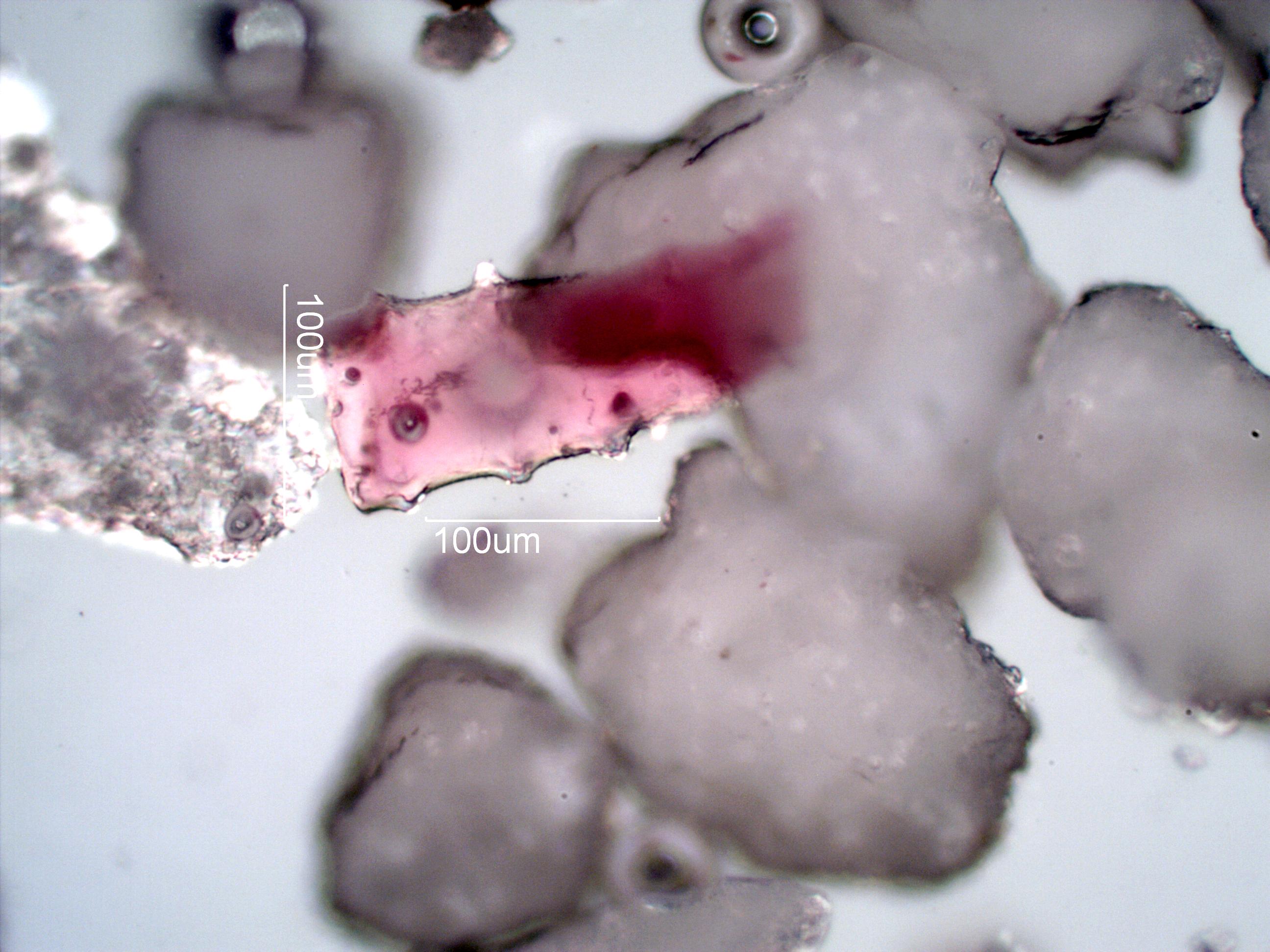Sand, Cancun, Mexico
Sand grains from the beach are from various shells, sponge spicules, and coral fragments. The pink grain here is a sponge spicule. The grains that appear dark with transmitted light are white with reflected light. These are various forams, shell fragments, and other biological calcitic debris.
Transmitted Off Crossed Circular Polarized Light and Reflected Darkfield Illumination
Welland, Michael, SAND: THE NEVER ENDING STORY, University of California Press, 2009.
http://www.microscopy-uk.org.uk/mag/indexmag.html?http://www.microscopy-uk.org.uk/mag/artjun01/clsand.html
(Good Information on the microscopy of sand, Great site for more information on microscopy in general)
http://www.scientificamerican.com/article.cfm?id=a-grain-of-sand-natures-secret-wonder
(Good Information on Sand with links to more information on sand)
http://www.sciencelive.org/component/option,com_mediadb/task,play/idstr,Open-feeds_fsc_exploring_sedimentary_processes_fsc02_02_m4v/vv,-2/Itemid,97
(Brief, very informative video on what can be learned from the shape of a sand grain.)
Definition/Function:
Significance in the Environment:
Characteristic Features:
Associated Particles:
References:
Greenberg, Gary, A GRAIN OF SAND: NATURE'S SECRET WONDER, Voyageur Press, 2008.Welland, Michael, SAND: THE NEVER ENDING STORY, University of California Press, 2009.
http://www.microscopy-uk.org.uk/mag/indexmag.html?http://www.microscopy-uk.org.uk/mag/artjun01/clsand.html
(Good Information on the microscopy of sand, Great site for more information on microscopy in general)
http://www.scientificamerican.com/article.cfm?id=a-grain-of-sand-natures-secret-wonder
(Good Information on Sand with links to more information on sand)
http://www.sciencelive.org/component/option,com_mediadb/task,play/idstr,Open-feeds_fsc_exploring_sedimentary_processes_fsc02_02_m4v/vv,-2/Itemid,97
(Brief, very informative video on what can be learned from the shape of a sand grain.)


